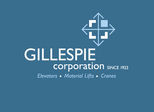- Glenn Siegel
- Nov 12, 2019
It felt a little daunting to come face-to-face with Jen Shyu, whose talent, ambition, curiosity and energy has resulted in so many accomplishments in a short amount of time. But her friendliness and her laugh are genuine and disarming; putting people at ease is yet another of her super powers.
She made a lot of friends during her three-day UMass residency, which culminated in an evening-length performance of her solo piece, Nine Doors, at Bowker Auditorium on November 7. Shyu’s concert, co-produced by the Fine Arts Center’s Magic Triangle Jazz Series and the Asian Arts & Culture Program, showcased her mastery of biwa, moon lute, gayageum, piano, percussion, movement, and most spectacularly, voice.
Nine Doors is a meditation on loss, dedicated to her friend, the 30-year old Indonesian shadow-puppet master Sri Joko Raharjo. In her opening remarks, she asked the audience to reflect on the loss of a loved one. After getting us to pair up for a “shoot shake” (stand up, hold hands, move them back and forth, yell ‘shoot’ repeatedly,) and some deep breathing, we settled in for a moving, virtuosic 75-minute tour de force.
After getting the phone call detailing the car crash that killed Joko, his wife and 11-month old son, she picked up the biwa, a four-string Japanese lute, and wailed. Her anguished singing and playing set the tone for the ritual drama that followed. The piece showcased the deep dive Shyu has taken into the stories, poetry, dress, dance and music of Korea, China, Japan, Indonesia and Taiwan.
Born in Peoria, Illinois to Taiwanese and East Timorese parents, she learned ballet and won awards as a classical pianist and violinist before studying opera at Stanford. While in the Bay Area, she befriended a group of Asian American improvisers, including Francis Wong, Jon Jang and Anthony Brown, who encouraged her to explore her cultural roots. A push from Steve Coleman first sent Shyu to Taiwan, beginning a life-long, in-person pursuit of indigenous traditions. Foundation support from Guggenheim, Fulbright, Doris Duke and USA Fellow has enabled her to spend years abroad, learning languages and songs, making friends, finding collaborators and gaining first-hand knowledge of traditional practices.
I first encountered Shyu’s music about eight years ago, listening hard to her exquisite duo record with bassist Mark Dresser, Synastry (Pi Recordings, 2011), her contemporaneous contributions to Steve Coleman’s Pi Recordings, and her own band, Jade Tongue, which over the years has included Thomas Morgan, Dan Weiss, Mat Maneri, Ambrose Akinmusire, Miles Okazaki and David Binney. She is a chance-taker, the embodiment of the Pi tag line: “Dedicated to the innovative.”
Song of Silver Geese (2017), her latest Pi recording, contains ensemble versions of some of the material we heard on Thursday. “I wanted to write for as big a group as I could,” Shyu told National Sawdust, which premiered Nine Doors in 2018, “and then distill it down to a solo.”
“It operates in some unpatrolled border zone,” said NPR, “blurring lines between folk song and art song, the traditional and the avant-garde, Western and Eastern, between waking consciousness and dream logic.” That’s exactly what we heard.
The piano, featured on “Song of Baridegi,” stood out from the three stringed instruments, providing brightness, and an edge of jazz energy; a western instrument in an East Asian music world. Shyu sung with abandon while generating sheets of sound through all registers of the 9-foot Steinway. It stirred the audience.
There were many other sublime moments: a short Javanese dance with a red silken scarf, the Korean female centered myth of Ati Batik, recited in English with soribuk drum accompaniment, the disembodied recorded sounds of drums and Joko and his family laughing together, Shyu holding her gayageum on her shoulder like a coffin, slowly turning in half light. The evening unfolded like a dream: a fleeting image, a brief encounter, a feeling of ritual, a transformation.



























